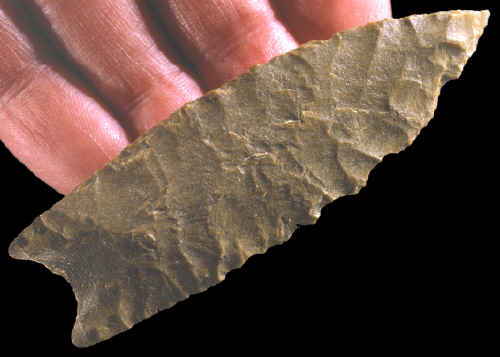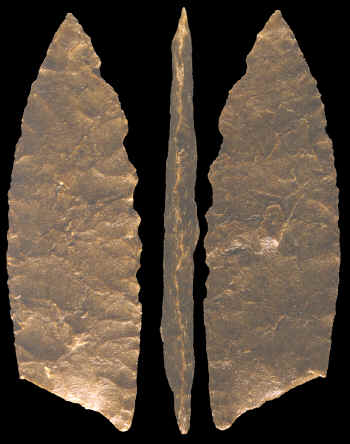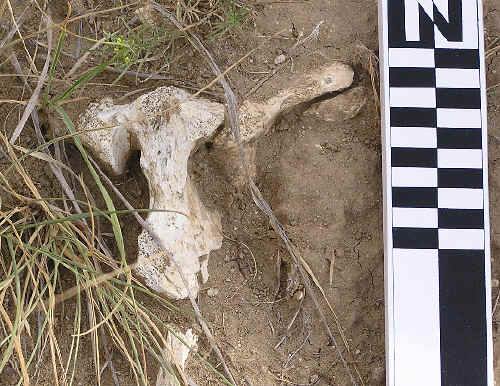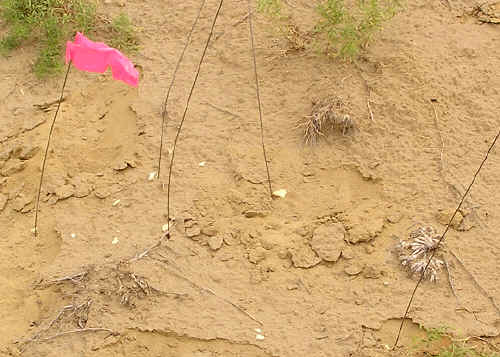|
|
|
What type of point is it and what is its age? We are presently radiocarbon dating a piece of cranial bone in hopes of answering the age question. But answering the other question is much more difficult. Is the point Goshen, Allen, Dalton, Plainview, or perhaps unfluted Clovis? It's difficult to tell. I personally think it is from the late Paleo-Indian Allen complex, which dates between 9,500 to 8,000 radiocarbon years before present from sites on the Central Plains. |
|
|
We all know that single isolated points can be hard to type without any associated dates, other tools, etc. As well, it all depends on where you draw your own experience. I've worked throughout the Central and Southern High Plains and the Paleo-Indian record in those regions is slightly different than that of the northwestern Plains. All sorts of things can cause variability in lithic technology, including the raw material availability and quality, the functions of the tools at hand (knives verses points), and of course, the group of people making the points. We simple don't know if point types always equal cultural groups during the Paleo-Indian period. I have my doubts that we'll ever be able to figure that out. But one thing is for certain, this form of lanceolate, concave based projectile point was one heck of an important design, because folks used it all over North America at the end of the Ice Age and for the next several thousand years. The point form even reappears during the Plains Archaic, as the McKean point is a smaller version of this same design. |
|
|
|
|
We hope to return to the Dilts bison kill sometime in the near future and excavate a small portion of the site to determine whether there are any more bones or tools buried on the site. Hopefully the site will be protected and preserved so that additional information can be added to the continuing story of Paleo-Indians on the high Plains of Wyoming. Thanks to the landowner and the energy company for allowing our work on this site. If you have any questions or comments, please email me at jlabelle@westernls.com |
|
|
|
|
If you have any questions or comments, please email me at jlabelle@westernls.com |
|
|
"REFERENCES"
2003,
LaBelle, Jason M., "A Class III Cultural Resource Inventory of
Williams Production RMT Antelope I Addendum Coal Bed Methane Plan of
Development, Campbell County,
Wyoming", WLS Archaeology Report 03-08, pages14-24. |
|



